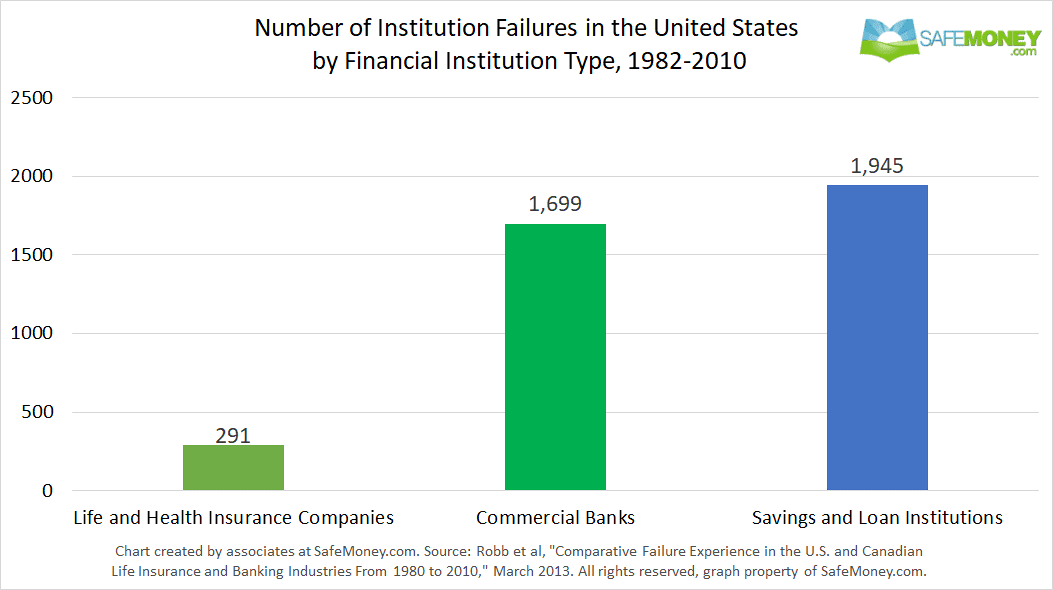Who Guarantees Annuities?

People buy annuities for many reasons, from market protection to guaranteed income payouts. After all, an annuity is the only instrument capable of paying a guaranteed income for life. But who guarantees annuities? What sort of safeguards stand behind those guarantees?
The annuity guarantor is, of course, the life insurance company issuing the contract.
By law, life insurance companies must maintain very strict capital reserves for every dollar of fixed annuity premium. State regulators require annuity insurers to keep dollar-for-dollar reserves in coverage for every dollar of fixed annuity premium they hold.
Many life insurance companies hold reserves above this. For example, some insurers have $1.08 in reserve capital for every annuity premium dollar.
Hence, this is what financial pundits mean when they say that a life insurer’s ability to make good on their annuity promises depend on that company’s financial strength and claims-paying ability.
What about other safeguards if an insurance company has a liquidity problem? There are also other measures that state insurance regulators put in place as a financial safety net.
Let’s get more into the details of how insurance companies’ financial strength are monitored. We will also cover some of these other safety net features that help back up fixed annuity guarantees to policyholders.
Company Financial Strength Ratings
Four credit agencies — A.M. Best, Moody’s, Fitch Group, and Standard & Poor’s — issue opinions on the financial strength of life insurance carriers. These opinions are informally called insurance company credit ratings. Since they are subjective, the ratings can vary from agency to agency.
Each agency also has its own rating scale that tends to be different from scales of the other three agencies. Fitch Group issues an AAA rating for “exceptionally strong.” As for A.M. Best, the top rating is A+, indicating a grade of “superior” strength.
The agencies publish their credit rating opinions so they are easily found by the public. The agencies provide them as a means to combat insurer insolvency. It’s one source of information on the insurance company’s ability to cover insured risks that its policyholders depend on it to shoulder.
Capital Reserves and Solvency Ratios
Of course, credit ratings aren’t the only or necessarily even the “best” method for judging an insurance company’s ability to make good on its promises.
Another important metric is the insurance company’s “solvency ratio,” or how much it holds in excess reserves above the dollar-for-dollar capital reserve requirement.
You will find an insurance company’s solvency ratio reported in figures like “108” or “105.” In the first case, the insurance company would have $1.08 in reserves for every dollar of annuity premium, meaning it holds eight cents in excess capital above the reserve requirement. And 105 means the insurer holds $1.05 in reserves for every dollar of annuity premium.
Many insurance companies with lower credit ratings than the top rankings hold strong solvency ratios in order to uphold their annuity guarantees to policyholders. This is also to bring confidence to their policyholders and other stakeholders of their ability to handle their insured risks.
Reinsurance Systems
Many insurance companies also have reinsurance systems or a setup in which an insurance company is reinsured by other insurance companies as a means of risk management.
This provides annuity owners with a powerful safety net against insurance company insolvencies. Reinsurance companies are essentially insurers for other insurers.
They are also used to help health insurance companies to bear the rising costs of healthcare by paying for a portion of the health insurance company’s expenses. Typically, a reinsurance company will step in when a policy holder’s claim reaches a certain dollar amount or is diagnosed with certain high-cost medical conditions.
State officials from Oregon and Maryland said that this system has allowed state health insurance companies to reduce premiums and has also helped to stabilize the health insurance markets in those states.
What Happens If An Annuity Insurance Company Goes Under?
Sometimes, in spite of all these protections, insurance companies have a liquidity problem or even insolvency. What happens in those cases?
When a life insurance company starts to become illiquid, the state insurance department steps in to rectify the situation. The department puts the insurer into financial rehabilitation with the goal of preventing it from falling into insolvency. In many cases, as tracked by the National Organization of Life & Health Guaranty Associations, those efforts are successful.
However, if the state insurance regulator determines that the insurance company can’t be rehabilitated, the state insurance commissioner declares that insurance company to be insolvent. Then the commissioner will ask the state court to order the insurer’s liquidation.
If more money is needed from there, the state insurance guaranty association steps in.
What is a State Guaranty Association?
Annuities aren’t covered by a national insurance coverage group, like bank deposits and CDs are by the Federal Depository Insurance Corporation (FDIC). Instead, each state has a safety net, and the states tend to have different coverage amounts.
All 50 states as well as the District of Columbia have this guaranty association, which is to protect policyholders in the case when an insurance company becomes insolvent (and hence can’t maintain its insured obligations anymore).
The National Organization of Life & Health Guaranty Associations mentioned above also works with all 50 state guaranty associations. When the state commissioner’s effort to keep the insurance company from going under doesn’t work, the state guaranty association becomes involved.
This requires other insurance companies in the state to jump in, helping relieve the failed insurance company by covering its obligations. How much they become involved is in proportion to their market share of the insurance industry in that state.
The National Association of Insurance Commissioners forbids insurance companies and agents from advertising this — and even the guaranty associations’ existence. You can learn more about these entities on the NOHLGA website.
Insurance Company Failures Don’t Happen Frequently
According to national insurance coverage data, which covers when three or more guaranty associations have stepped in, only 77 insurance companies have been judged to have liquidity issues or be insolvent since 1993.
This data doesn’t include insurance company failures that involved fewer than three guaranty associations. However, one comprehensive study of U.S. financial institution failures found that yearly insurance company failure rates ranged from 0.18% to 1.91% from 1983 to 2013. Keep in mind this includes health insurers as well as life insurers.
From 1982 to 2010, there were 291 failures of insurance companies in the United States, including health insurers. During that same time period, there were 1,699 commercial bank failures and 1,945 savings & loan institution failures in the U.S.
The bank failures spiked in the 1980s due to regulatory failures and again during the deep economic troubles of the financial crisis, spiking in 2008-2010.
This isn’t to compare insurance company failures against the failures of other financial institutions. Rather, it’s to show how, even in times of when financial institutions are failing at higher rates, these safeguards that insurance companies have in place work well.
Now You Know Who Guarantees Annuities… What is Next?
Now you have some more information on who guarantees annuities and what stands behind those guarantees. All of that being said, is an annuity contract right for you?
The strength of the guarantees offered by specific annuities is the most important question to answer. Since an annuity is a tax-advantaged retirement-saving and income-paying vehicle, it’s a long-term commitment.
You want to be sure that the insurance company will be able to make good on its annuity promises to you. What are the actual guarantees in the annuity contract? What sort of financial stability does the insurer have? With hundreds and hundreds of annuity options available in the financial market, how do you know which one would be best for your needs?
Do You Want Some Guarantees in Your Retirement Strategy?
An experienced, annuity-knowledgeable financial professional can help drill down on what makes sense for you. They will help you work through these “what ifs,” pinpoint potential gaps in your existing retirement strategy, and assist you as you explore the possibilities for an effective annuity solution.
What if you are on the lookout for a financial professional to guide you?
No sweat, answers to your questions are only a click away at SafeMoney.com. Many financial professionals are available here and ready to assist you.
Use our “Find a Financial Professional” section to connect with someone directly. You can request an initial appointment to discuss your concerns, goals, and overall financial situation. Should you need a personal referral, call us at 877.476.9723.








